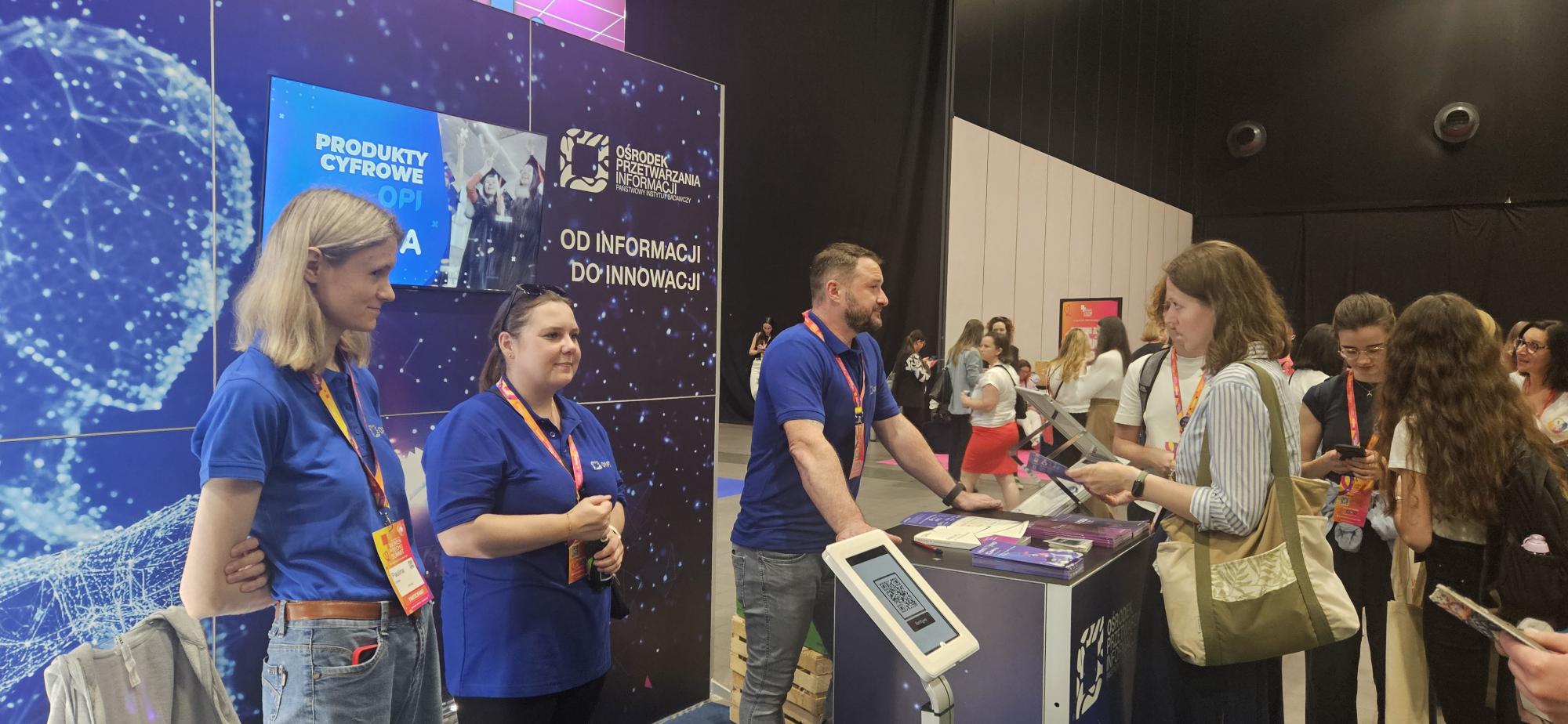The Women in Tech Summit is the largest conference in Central and Eastern Europe dedicated to women in the technology sector, female STEM students, and supporters of gender equality in IT and emerging technologies. By participating in the event, the Polish Ministry of Science and Higher Education (MNiSW) and OPI PIB once again demonstrated their ongoing commitment to the initiative. The significance of the topics discussed at the conference is corroborated by data from the RAD-on portal. The RAD-on’s Women in Science section offers interactive reports that enable users to seek information that is tailored to their individual needs.
The promotion of gender balance at universities aligns with the principles of social justice and equality, which are core values of modern educational institutions. Women’s representation in academic roles contributes to breaking gender stereotypes and ensures equal career opportunities. Gender balance fosters the creation of a more inclusive and supportive working environment, enhancing staff satisfaction and overall performance.
Does ‘professor’ sound masculine?
Ensuring gender equality within academic staff is vital for broadening perspectives and strengthening the quality of education and research. Higher education institutions (HEIs) that promote gender equality are more capable of reflecting the structure of society and inspiring all student groups. Women are progressively underrepresented in higher academic positions, degrees, and titles. In 2023, they accounted for over 50% of PhD holders, but only 29% of them were professors. This phenomenon has been characteristic of Polish science for many years. It should be noted, however, that the overall lower proportion of female professors is directly linked to their underrepresentation in the older cohorts of academic teachers. Given the fact that age and academic degrees are correlated, generational changes could gradually improve gender balance in senior academic roles.
The glass ceiling index (GCI) provides additional evidence of the disparity between male and female academic teachers at the professorial level: in 2023, the majority of HEIs recorded scores between 1 and 3. With a GCI of 1.72, science, technology, engineering, and mathematics (STEM) exhibit the greatest gender disparities, reflecting markedly reduced opportunities for women to become professors. The index for social sciences and humanities (SSH) records a comparable value of 1.69.
Women unrepresented in STEM
The gender distribution of academic staff varies considerably between different fields of study. Female academic staff are least represented in STEM fields, accounting for only 34%, whereas SSH fields demonstrate full gender parity at 50%. In disciplines where women constitute the majority, gender disparities are generally less pronounced than in fields dominated by men. For instance, men constitute over 40% of academic staff in medical sciences, while women account for only around 28% in engineering and technology.
The need to intensify efforts to support women in teaching positions in STEM is evident and well-justified. An increased presence of female instructors in these fields may encourage and inspire female students to engage in STEM education and careers, contributing to overcoming long-standing obstacles and gender stereotypes.
For more information on women in science, see a dedicated RAD-on section at:
